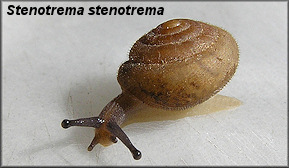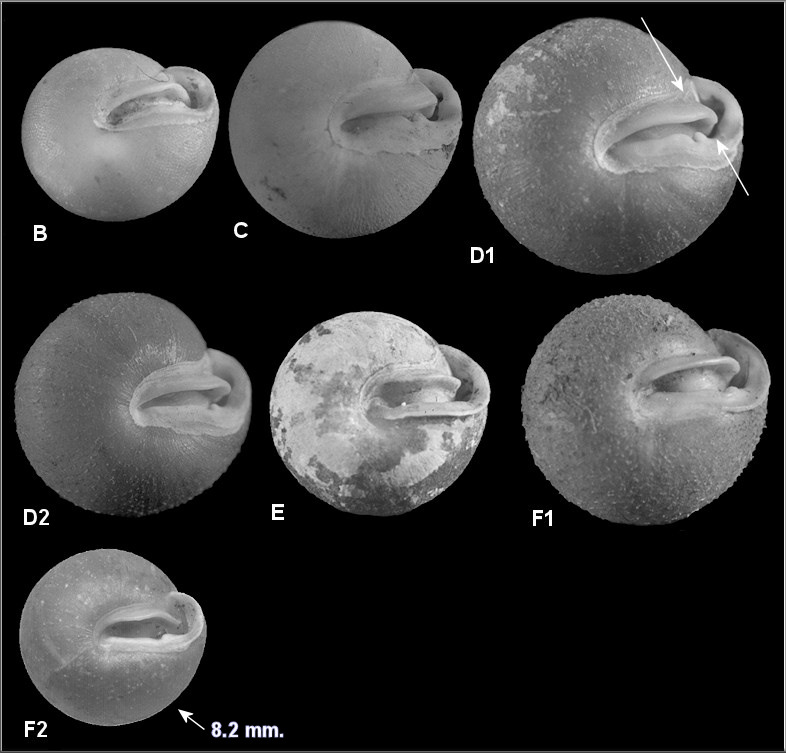| A Contrivance to Combine Conchological Collection Capacity Coincident with Canoe Clamming | ||||||||||||||||||||||||||||||||||||||||||||
| -OR- | ||||||||||||||||||||||||||||||||||||||||||||
| Dream Stream Stems Teem with Stenotremes | ||||||||||||||||||||||||||||||||||||||||||||
| By Harry G. Lee | ||||||||||||||||||||||||||||||||||||||||||||
| The Paint Rock River drains the southeast flank of the
Cumberland Plateau. It has escaped much of the adverse human
impact that has tainted most of its parent system, the
Tennessee River, into which it flows in northeastern Alabama. My
professional colleague and fellow votary of natural history,
Henry McCullagh, and I noted this relatively pristine waterway
many years ago when we took measure of the splendid and diverse
pearly freshwater mussel (naiad) fauna of the Cumberlandian
Province. The streams draining the plateau of the same name and
the western slope of the southern Appalachian Mountains
historically (i.e.,
Nineteenth Century) contained over a quarter of the world’s naiad
fauna. As the watershed received human immigration from Europe and Africa, the
resultant pressures of agriculture, mining, flood control, and
"recreation" polluted and otherwise altered this
fluvial cornucopia into a far less provident habitat.
Probably more than a dozen of the original naiad species are extinct, and several times
that number are in danger of the same plight. Conditions in the Tennessee River, now tamed into a series of impounded lakes, are fit for only a small fraction of the original naiad species. Most of our naiads thrive in (and often require) a low turbidity, highly oxygenated, high velocity riverine habitat. The consequence of the near loss of these conditions is the disappearance of many species throughout most of the larger rivers of the system. Some of the "cleaner" tributaries support numbers of the naiad species which have been extirpated downstream. The Paint Rock is one such refugium.* Henry and I had to make a pilgrimage to this "dream stream" which offered the promise of supporting a natural and speciose (if anachronistic) naiad fauna. We arranged to rendezvous with Fred Thompson, Curator of Malacology at the Florida Museum of Natural History, in Anniston, Alabama to collect the Paint Rock over Labor Day weekend, 1996. Using two vehicles and one canoe, we did what we could in two days to study the dream stream and its malacofauna.
Somewhat daunted by the slim malacological pickings, I searched about for consolation. I took a few aquatic snails (Elimia, Pleurocera, Leptoxis, Campeloma, etc.), but I was soon distracted by the large logjams which festooned the riverbanks at frequent intervals. At closer inspection, these deposits of fluvial wrack at flood peaks up to fifteen feet above the present water level were seen to contain all manner of dismembered upstream flora. To my delight, scattered among the stems and twigs was a smattering of empty, but generally intact, landsnail shells. After sampling about a dozen and a half of the larger drift banks, I realized I had almost two hundred specimens of perhaps twenty species. Recalling my own advice to landsnailers [Shell-O-Gram 31(1): 3,6-8. Jan.-Feb.,1990], I grabbed several handfuls of stems, etc. from the last few strands and stuffed them into a one quart ziplock plastic bag.
Actually, we canoed along two of the best landsnailing counties in the United States, Jackson and Madison Counties, Alabama. According to Leslie Hubricht (The distributions of the native land mollusks of the eastern United States Fieldiana 1359, 1985) about 1/4 of the 500 shelled landsnail species occurring in the U.S. east of the Rockies and Pecos River can be found in one or both of these counties. I took a quarter of that quarter, but, just the same, I did personally collect six species (one a real novelty) for the first time; that’s certainly not bad for a fall-back strategy on a conchological canoe trip over a stretch where even the muskrats had trouble finding naiads. *Others include the Clinch, Powell, Elk, Green Rivers, etc. of Virginia, Tennessee, North Carolina, and Kentucky.
Left to right; top row: Stenotrema deceptum (B), S. exodon (C), S. turbinella (D1) [upper arrow indicates buttress (the first four species have this feature); lower arrow points to inter-denticular sinus]; bottom row: S. stenotrema (D2), S. leai aliciae (E), S. barbatum (F1), S. calvescens (F2). Captions refer to the dichotomous key. Key to the Paint Rock River drift Stenotrema
Landsnails collected from drift, Paint Rock River between U.S. Route 72 and Butler Mill, Jackson, Madison, and Marshall Counties, Alabama, by the author, 1 September, 1996. [Those species marked with a "*" denotes first occasion collected by the author.]
(1) Stenotrema leai aliciae was transferred to Euchemotrema since the time the original article was written. --Updated May 26, 2005. See Thompson, F. G., 2005. Two new species of hydrobiid snails of the genus Marstonia from Alabama and Georgia. The Veliger 47(3): 175-182. March 16. --Updated February 1, 2012 in regards to Stenotrema species identification. --Updated January 17, 2021 in regards to identification keys. |
 A highlight of the expedition was a six mile canoe
reconnaissance from U.S. Route 72 just south of the town of Paint
Rock to the tiny settlement of Butler Mill (twenty miles north of
Guntersville, Alabama) on September first. Here the Paint Rock is
shielded by a riparian corridor of hardwoods as it meanders
through rich farmland. It averages about a hundred feet in
breadth and has frequent gravel-bottomed riffles as it drops
about twenty feet in altitude on its course to the once-mighty
Tennessee, 27 to 21 miles downstream. Limestone boulders and
scarps along the banks and semi-limpid channels serve as a
reminder of the calcareous bedrock of the plateau and upland
valley it drains. Although the river was at a very favorable (low)
stage, the naiads seen were scarce and essentially limited to
slim pickings among muskrat-discards at the rodents’
habitual feeding stations (middens) along the banks. It was still
a productive trip malacologically, however! Fred found colonies of a new
aquatic Hydrobiid snail (Marstonia angulobasis Thompson, 2005)**, and Henry and I collected, or
otherwise accounted for, about twenty naiad species in toto,
but there’s more to the story.
A highlight of the expedition was a six mile canoe
reconnaissance from U.S. Route 72 just south of the town of Paint
Rock to the tiny settlement of Butler Mill (twenty miles north of
Guntersville, Alabama) on September first. Here the Paint Rock is
shielded by a riparian corridor of hardwoods as it meanders
through rich farmland. It averages about a hundred feet in
breadth and has frequent gravel-bottomed riffles as it drops
about twenty feet in altitude on its course to the once-mighty
Tennessee, 27 to 21 miles downstream. Limestone boulders and
scarps along the banks and semi-limpid channels serve as a
reminder of the calcareous bedrock of the plateau and upland
valley it drains. Although the river was at a very favorable (low)
stage, the naiads seen were scarce and essentially limited to
slim pickings among muskrat-discards at the rodents’
habitual feeding stations (middens) along the banks. It was still
a productive trip malacologically, however! Fred found colonies of a new
aquatic Hydrobiid snail (Marstonia angulobasis Thompson, 2005)**, and Henry and I collected, or
otherwise accounted for, about twenty naiad species in toto,
but there’s more to the story. It took a week to dry (180 degrees for 6 hours),
sieve, and finally microscopically examine the stems (etc.) the
ziplock disgorged, but there was, as predicted, ample reward. A
number of snail specimens, far too minute to be plucked in the
field by visual reconnaissance, were added to the day’s
collection. The total count, 32 species (see table), is
considered a good snail catch for a single station in this part
of the world. Of the total, the genus Stenotrema
(all shells visually-plucked in the field)
was dominant both in total numbers and a formidable seven species. Admittedly a little overwhelmed by this
diversity and novelty, I put in a few hours sorting and resorting
these 120 or so stenotremes. Unfortunately, I don’t actually know where these 32 species lived in the 500 or
so square miles that shed the waters which rafted and stranded
their shells along our day’s itinerary.
It took a week to dry (180 degrees for 6 hours),
sieve, and finally microscopically examine the stems (etc.) the
ziplock disgorged, but there was, as predicted, ample reward. A
number of snail specimens, far too minute to be plucked in the
field by visual reconnaissance, were added to the day’s
collection. The total count, 32 species (see table), is
considered a good snail catch for a single station in this part
of the world. Of the total, the genus Stenotrema
(all shells visually-plucked in the field)
was dominant both in total numbers and a formidable seven species. Admittedly a little overwhelmed by this
diversity and novelty, I put in a few hours sorting and resorting
these 120 or so stenotremes. Unfortunately, I don’t actually know where these 32 species lived in the 500 or
so square miles that shed the waters which rafted and stranded
their shells along our day’s itinerary.